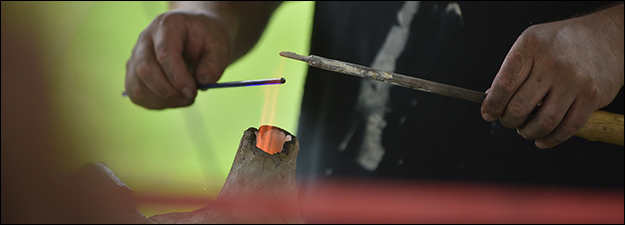Before/After Constantinus Africanus: Medicine in the Beneventan Zone and Beyond II
Sponsoring Organization(s)
Society for Beneventan Studies
Organizer Name
Richard F. Gyug
Organizer Affiliation
Fordham Univ.
Presider Name
Andrew J. M. Irving
Presider Affiliation
Univ. of Notre Dame/Cologne Center for eHumanities
Paper Title 1
Constantine's De genecia Revisited: Women's Medicine at Monte Cassino
Presenter 1 Name
Monica H. Green
Presenter 1 Affiliation
Arizona State Univ.
Paper Title 2
Constantine the African (d. ante 1098-99) and Materia medica: Translating Drugs and Recipes in the Work of Isaac Israeli (d. ca. 320/932)
Presenter 2 Name
Raphaela Veit
Presenter 2 Affiliation
Thomas-Institut, Univ. zu Köln
Paper Title 3
Erosis: Constantine the African and the Literary Record
Presenter 3 Name
Robin William Girard
Presenter 3 Affiliation
Washington Univ. in St. Louis
Start Date
14-5-2016 1:30 PM
Session Location
Fetzer 2030
Description
Constantinus Africanus (d. ante 1098/99), the first known translator to render Arabic medical literature into Latin, came from North Africa and eventually settled at the monastery of Montecassino under the famed abbot Desiderius (d. 1087). Despite the impact of his work, much remains to be investigated about the texts he produced and the larger revolution in western medicine he facilitated. This session, the second of two, concerns medicine and the production of medical manuscripts as a mode of communication and activity that connected the region of the Beneventan script, with Montecassino its most prominent center, to its neighboring Muslim and Greek regions, but also to the rest of Latin Europe north of Rome.
-Richard Gyug
Before/After Constantinus Africanus: Medicine in the Beneventan Zone and Beyond II
Fetzer 2030
Constantinus Africanus (d. ante 1098/99), the first known translator to render Arabic medical literature into Latin, came from North Africa and eventually settled at the monastery of Montecassino under the famed abbot Desiderius (d. 1087). Despite the impact of his work, much remains to be investigated about the texts he produced and the larger revolution in western medicine he facilitated. This session, the second of two, concerns medicine and the production of medical manuscripts as a mode of communication and activity that connected the region of the Beneventan script, with Montecassino its most prominent center, to its neighboring Muslim and Greek regions, but also to the rest of Latin Europe north of Rome.
-Richard Gyug

